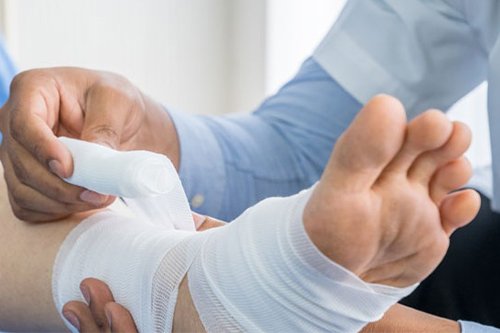Trauma and Fractures
Trauma and fractures are injuries that occur due to external forces applied to the body, resulting in damage to the bones or soft tissues. They can range from mild to severe and may require different levels of medical intervention.
Trauma: Trauma refers to any physical injury or damage caused by an external force. It can result from various incidents, such as falls, motor vehicle accidents, sports injuries, violence, or industrial accidents. Trauma can affect bones, muscles, ligaments, tendons, nerves, and organs.
Fractures: A fracture is a type of bone injury where the continuity of the bone is broken. Fractures can be classified into different types based on their severity, location, and nature.

Common Types of Fractures
- Closed Fracture: The broken bone does not penetrate through the skin.
- Open Fracture: The broken bone protrudes through the skin, increasing the risk of infection.
- Greenstick Fracture: A partial break in a bone, often seen in children whose bones are still relatively flexible.
- Comminuted Fracture: The bone breaks into multiple fragments.
- Stress Fracture: A tiny crack in the bone caused by repetitive stress or overuse.
Symptoms
- Pain: Pain is one of the most common symptoms of trauma and fractures. The pain may range from mild discomfort to severe and debilitating, depending on the extent of the injury.
- Swelling: Swelling often occurs around the injured area due to inflammation and the body’s natural response to the trauma.
- Bruising (Ecchymosis): Bruising or discoloration of the skin may occur as a result of blood leaking from damaged blood vessels into the surrounding tissues.
- Deformity: Fractures can cause visible deformities in the affected area, leading to an abnormal alignment of bones or joints.
- Limited Range of Motion: Injured joints or bones may restrict movement, causing difficulty in performing certain actions.
Treatment
First Aid and Emergency Care:
- For severe trauma or fractures, call emergency services (911 or the appropriate emergency number) immediately.
- Administer basic first aid to control bleeding, stabilize the injured area, and prevent further damage. Avoid moving the injured person unless necessary, as movement may worsen the injury.
Medical Evaluation and Diagnosis:
- The injured person should be taken to a hospital or an emergency room for a thorough evaluation and diagnosis by a medical professional.
- X-rays, CT scans, or MRI may be performed to determine the extent and location of the fracture or trauma.
Fracture Reduction:
- If the fracture is displaced (bones are not aligned), it may require a reduction, which involves realigning the bone fragments to their proper position. This can be done through closed reduction (manipulation without surgery) or open reduction (surgical realignment).
Immobilization:
- Once the fracture is aligned, the injured area is immobilized using casts, splints, or braces to allow proper healing. Immobilization helps prevent further damage and provides stability to the healing bones.
Surgery (if necessary):
- Some fractures may require surgical intervention, especially if the bones are severely displaced, or if there are other complications like nerve or blood vessel injuries. Surgical procedures may involve the use of screws, plates, or rods to stabilize the fracture.
Pain Management:
- Pain relief is an essential part of the treatment process. Over-the-counter or prescription pain medications may be prescribed to manage pain during the healing phase.
